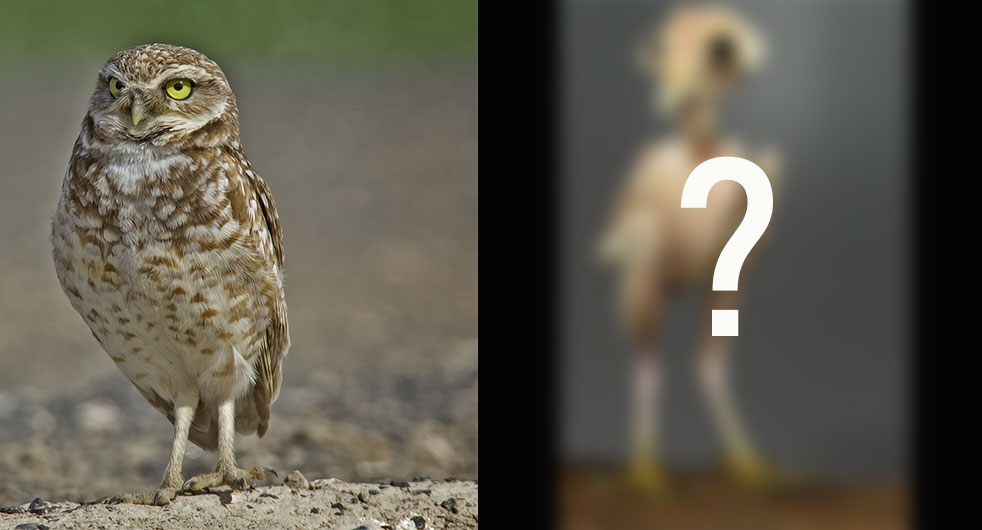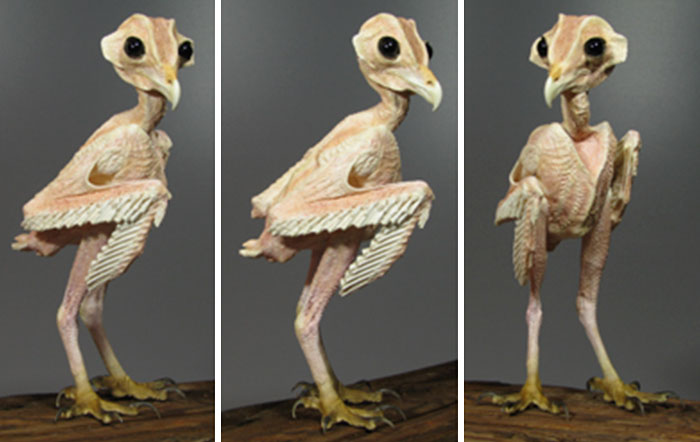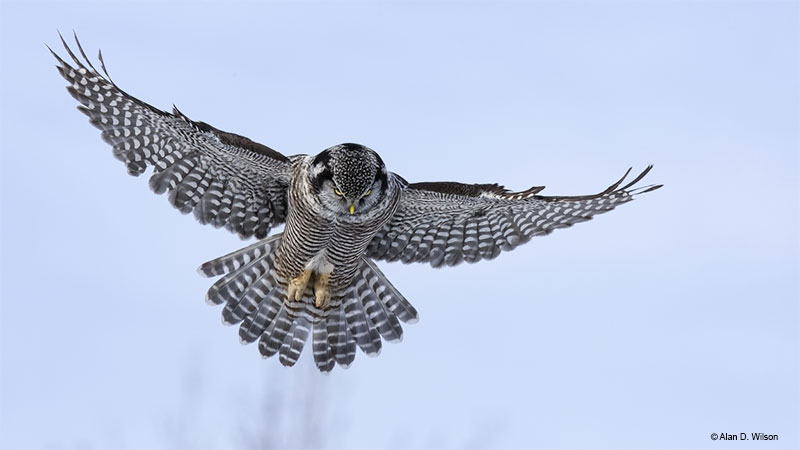
Are featherless owls real? Lately, I have been seeing a lot more pictures of featherless owls in my feeds and online searches. I have heard folks wonder if those odd-looking owls are some rare and little-known species or just some AI invention.
Owls without feathers are real, but away from the Internet, you won’t see one. These funny-looking birds are simply images of what an owl would look like if it didn’t have feathers.
With that in mind, it’s easy to wonder why featherless owls look so skinny! See this article to learn all about featherless owls and why owls need so many fluffy feathers.
On this page
What Would Owls Look Like Without Their Feathers?
Owls are some of the fluffiest birds around. If it weren’t for images of featherless owls, it would be tough to imagine these birds without all of those plumes! In general, a featherless owl looks a bit like a plucked chicken with the intimidating head of a big-eyed raptor.
Seriously, though, images of featherless owls help us see some of the vital adaptations owls use to catch prey. The bird’s skull has ridges and other shapes we never would have imagined! This misshapen appearance and associated feather growth help owls locate scurrying mice.

Image credit: boredpanda.com
Its big eyes are related to excellent nocturnal vision, and it needs a big, long, hooked beak to kill and swallow prey.
However, one of the other, more surprising aspects of owls is also laid bare.
Related: Funny bird names that make you take another look
Much to many people’s surprise, owls have super long legs! In fact, they look so long, that they almost look like a wading bird or some bird species that walks on the ground.
While some owls do actually stand and walk a bit, the main reason for long legs with talons is to have some extra reach for catching prey. Those long legs also keep the bird away from struggling animals that could bite or claw them.
Is it possible for owls to lose all their feathers?
While featherless owls seem to thrive in online digital habitats, is it still possible for owls to lose all their feathers?
Technically, yes, an owl can lose its feathers but it doesn’t happen in the wild. Like other birds, owls can drop feathers if they become extremely stressed or ill.
However, in nature, once a bird becomes weak or ill, it dies long before it loses substantial parts of its plumage. In captivity, we do sometimes see owls and other birds without feathers but even then, owls don’t usually lose all their plumage. These raptors tend to just drop some of their feathers and quickly regain them with proper care.
The Importance of Feathers
We never really see owls without their feathers because they can’t live without them. Feathers are important for all birds but even more so for owls. Their plumage is specialized for nocturnal living in a number of ways.
As with all birds, first and foremost, owls need feathers to keep them warm. Fluffy down covered with other feathers helps owls retain body warmth on cold nights from deserts to open, windy grasslands.
The plumages of Snowy Owls, Great Gray Owls, and some other northern species are so good, it keeps them warm and cozy in temperatures well below freezing!

Just as important, owl feathers also help them catch prey. Incredibly soft plumage makes it possible for owls to flap their wings without making a sound. Tiny structures on their feathers, especially on their wings, eliminate swooshing sounds that would alert mice and other nocturnal animals.
Lastly, owl feathers also help them hear and locate prey. Barn Owls and many other owl species that prey on nocturnal rodents have feathers that form a shallow, disk shape on their face. This satellite dish-like structure is fantastic for capturing the smallest of sounds. It also aids in locating the small animals make those sounds in the dark of the night.
Facts About Owls And Hunting
- Owls catch a wide variety of prey. They feed on everything from mice to rabbits, robins, ducks, and even birds as large as hawks!
- The fish-owls of Africa and Asia catch fish by wading and thrusting their taloned legs into shallow water.
- A family of Barn Owls can catch anywhere from 1,800 to 7,500 rodents in a year!
- Short-eared Owls hunt by flying low over open weedy fields. In winter, as many as a dozen or more can gather in fields with high rodent populations.
- While Northern Saw-whet Owls sit on their day roosts, they sometimes have a mouse in their talons or placed on a nearby perch. The dead prey can act as a good food source during the day or even the following night.
- In fall, Snowy Owls follow migrating ptarmigans to prey on them. These spectacular big white owls also hunt sea ducks from perches on icebergs!
- Many owls catch and eat smaller owl species. This helps eliminate competition in addition to providing the bigger owls with food.
- Some owl species mostly prey on insects. The Flammulated Owl and Elf Owl are two species that eat lots of moths and other big bugs.
- Burrowing Owls can line their burrows with dung. This helps attract insects that they feed on.
- Pygmy-owls are small but ferocious little owls that prey on birds. Unlike most owls, they are active during the day and can ambush and kill birds as big as an American Robin!
FAQ
Do owls lose their feathers?
No, owls do not lose their feathers. At least not entirely. As with other birds, owls do molt and change their feathers but not all at once.
Are owls intelligent?
Owls are some of the most intelligent birds. Although they might not be as intelligent as crows or some other birds, they have to be pretty smart to catch prey in the middle of the night.
Why are owl feathers special?
Owl feathers are special because they don’t make any noise in flight. They have tiny structures that nearly eliminate sounds made by flapping wings.

